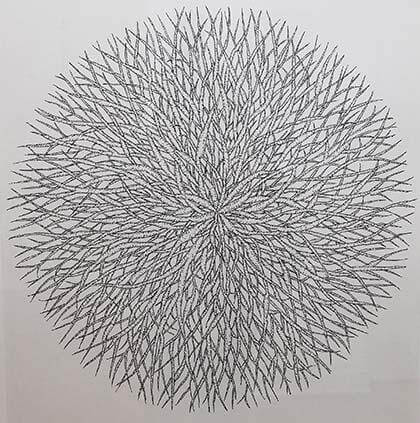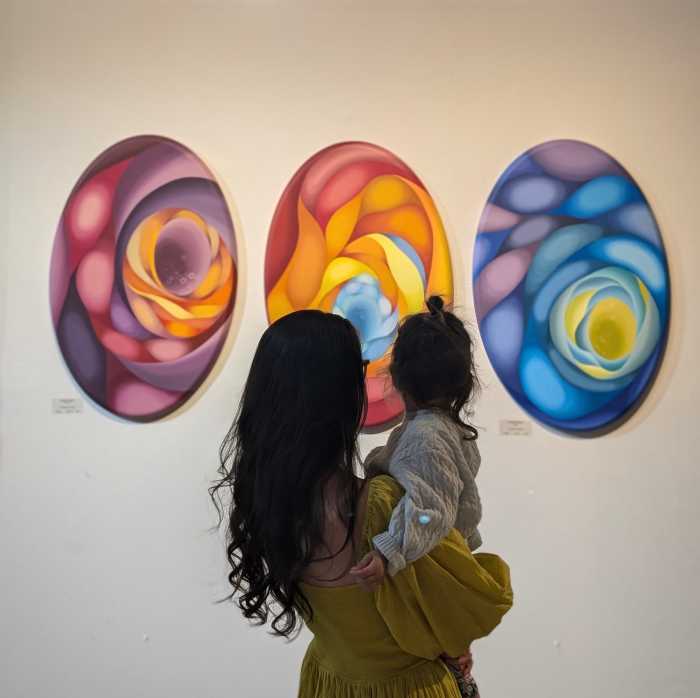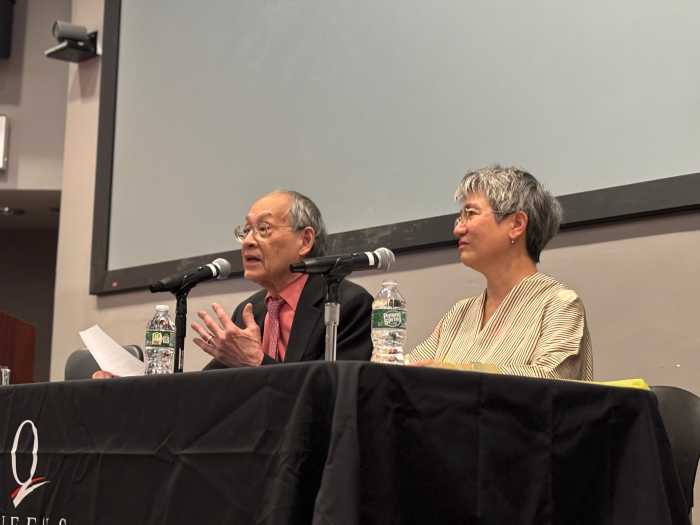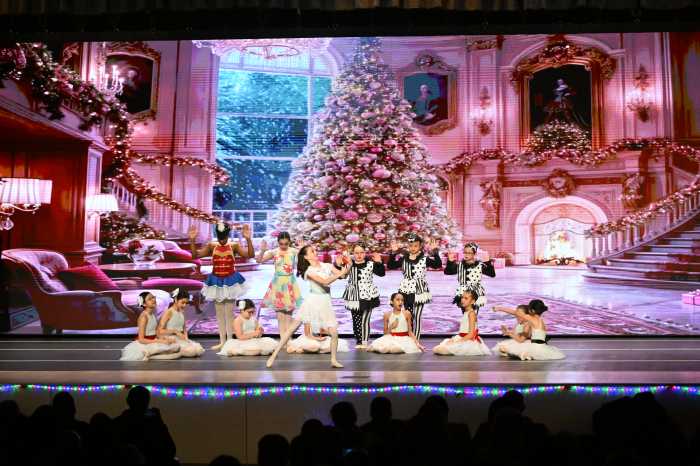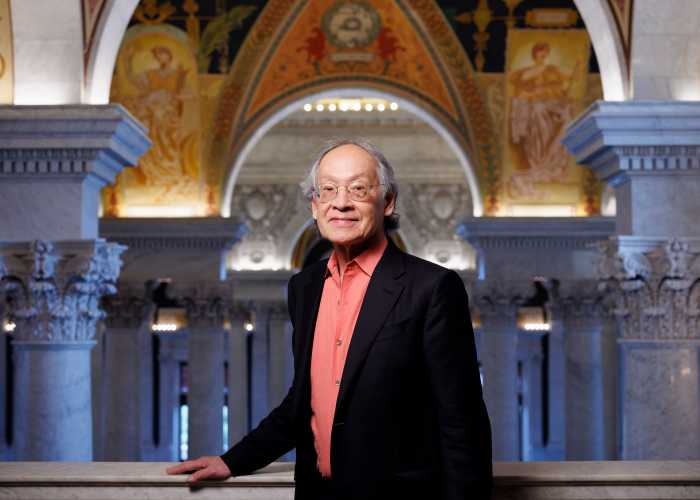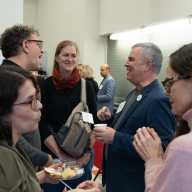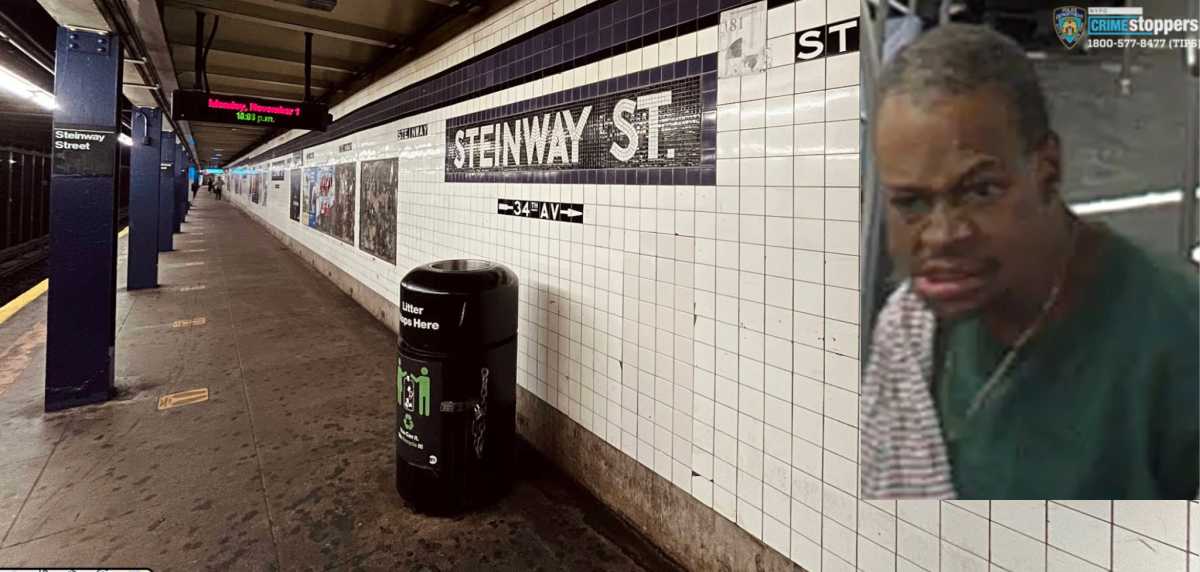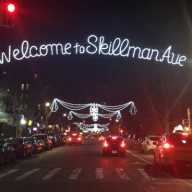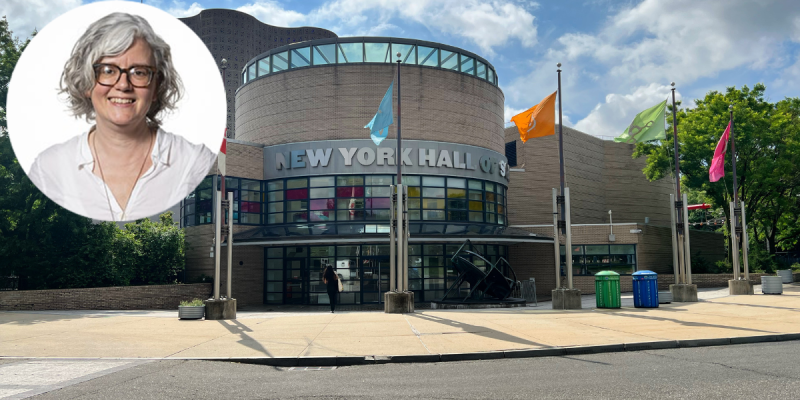By Allison Plitt
Currently displaying his artwork in a group show at dm contemporary gallery in Manhattan, Jackson Heights artist Eung Ho Park explores his life existence and his experience as an immigrant through a series of drawings called “Root Series.”
The theme for the drawings developed when the artist was walking through a park in Brooklyn and found an uprooted tree trunk. Bringing the tree trunk back to his studio, Park contemplated the subject matter in light of his upbringing in Woonchun, South Korea.
“Why this particular shape or form of tree trunk was interesting to me, I figured out later it was shaped like a ginseng root that I’m familiar with in Korea,” Park recounted. “Ginseng is used to make healthy tonic herbs. I grew up eating those ginseng roots because I was a physically weak person when I younger, so I was encouraged to eat it.”
Describing his drawings in the style of “conceptual minimalism,” Park adheres to the minimalist aesthetic of thin lines to create the impression of simplicity. In terms of to conceptualism, he focuses his artwork around the idea of roots and delves into its various meanings.
First, Park tries to convey to the viewer the evolution of life as represented by the circular path of the trunk’s roots.
“Transformation is my way of doing my work at this moment,” he explained. “‘Transformation’ meaning how we grow old — from infancy to adolescence to adults and so forth. Your body changes and your mind changes as well. I think it’s about dealing with death, birth and in-between.”
Park also attempts to express the concept of people being uprooted from their homelands to immigrate to other places. He depicts the struggles of immigrants and he likens their experience to “landing on your two feet and being expected to walk.”
“When I came to the United States in the early 1970s, there was a TV series called ‘Roots.’ I have the book by Alex Haley and he talks about his ancestors and the generations of slavery,” Park recalled. “My struggle is no comparison to African Americans when they came to America. They came forcefully and my family came freely, but coming here was challenging. We have language barriers to overcome and cultural misunderstandings to face.”
After deciding to move to the United States for better educational and economic opportunities, Park’s family settled in Portland, Ore. He later became interested in becoming an artist when he studied painting at the Pratt Institute in New York City.
Since graduating in 1984, Park has stayed in the area to concentrate on creating his artwork and participating in exhibitions. He is best known for his sculptures of found objects, such as the piece “I’m Looking at You,” in which he paints bottle caps to form a collection of colorful eyes.
Besides the personal contentment of seeing his work exhibited and appreciated throughout the United States, it was a recent talk Park gave at Long Island University’s C.W. Post campus on Long Island that made his work all the more meaningful.
“I get feedback from students, especially if they’re liking one thing,” he observed. “They understand where I’m coming from and what I’m trying to do with my artwork and that is very fulfilling, very satisfying.”
Eung Ho Park’s drawings will be showing at dm contemporary at 39 E. 29th St. in Manhattan till June 10. For more information about Park’s artwork and upcoming exhibits, contact him at eunghopark@aol.com or at 718-507-1434. You can also visit his website at eunghopark.com.

